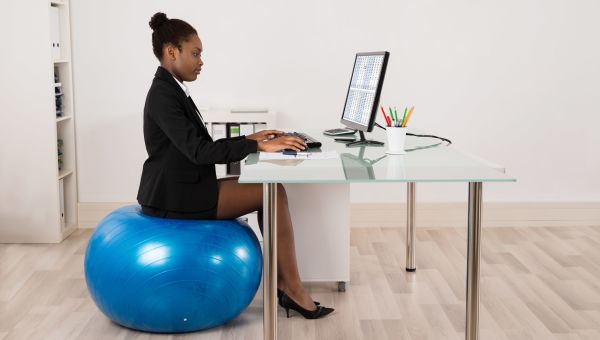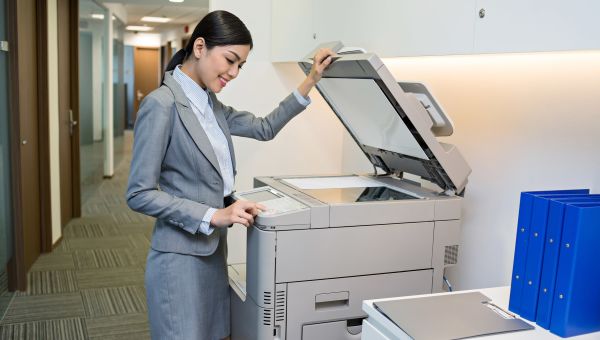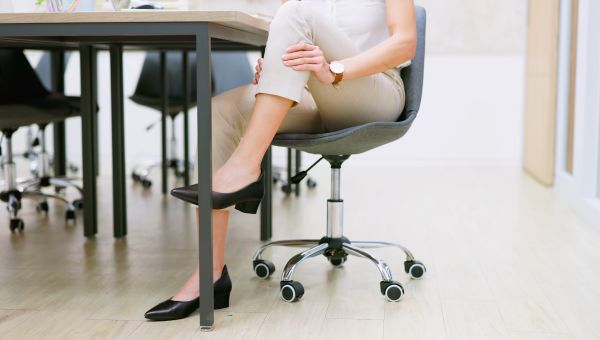7 simple exercises you can do in your office
Try these discreet exercises to help you stay in shape while working in the office.
Updated on March 29, 2024

Office life leaves many people sitting at their desks all day. This can lead to various health issues such as excess fat around the waist, higher cholesterol levels, an increased risk of heart disease and higher blood pressure, not to mention aches and pains. By stretching and moving your muscles and joints in the office, you can minimize these problems.
Want to exercise in the office, but are afraid of looking awkward? Try these seven subtle exercises that not only are barely noticeable, but will also work the different parts of your body throughout a day in the office.

Take a lap around the office
Find productive ways to get up from your desk to move. Aerobic exercise has many health benefits from reducing food cravings to strengthening your immune system. It can reduce anxiety and improve your memory, too.
How to do it: Walk the longer way around the office if you have to use the restroom. Stop by a coworker’s desk instead of emailing to directly communicate your message. On your lunch break, take a walk outside and breathe in some fresh air.

Do Kegels at your desk
A very subtle exercise that has a number of health benefits is the Kegel. For women, the pelvic exercise has been found to reduce stress urinary incontinence and research suggests that women with stronger pelvic muscles may experience more pleasurable sex. In men, Kegels can help with achieving and maintaining an erection.
How to do it: Squeeze the muscles you use for urinating for three seconds and then release for three seconds. Don’t Kegel while actually peeing, though.

Sit on an exercise ball instead of a desk chair
Instead of sitting on a regular office chair, sit on an exercise ball. This will help keep your abdominal muscles and hip flexors engaged, and can help prevent lower back pain.
How to do it: Find an exercise ball that allows you to sit with your knees at a 90-degree angle and your feet resting flat on the ground. Sit on the ball with your back straight and your core engaged. When sitting at the desk, be sure that your computer screen is at eye level. You can change the distance between your feet to increase the amount of abdominal strength needed to maintain balance on the ball. Start with 20 minutes, or until you start to feel uncomfortable.

Stretch your neck
Sitting at your desk and staring at your screen all day can strain your neck. Occasionally rotating stretching your neck and turning it prevents neck muscle cramps and long-term neck pain.
How to do it: Roll your shoulders back and down 10 times. Squeeze your shoulder blades together 10 times; pretend you’re trying to hold a ball between your shoulders. Put your hands on the back of your head and push your head into your hands 10 times. Try to touch your ear to your shoulder 10 times on each side. Gently rotate you head in a circle. Once your head reaches its original position, rotate your head in the opposite direction. Repeat this three times.

Build leg muscles while making copies
Waiting for copies at the copy machine? Take this time to sneak in a quick leg workout. Stretching and moving your legs builds muscle strength and endurance and prevents aches and leg pains. This exercise is subtle enough that if you hear someone coming, you can quickly stop.
How to do it: While holding on to the copy machine for balance, bring your knee up and down, or after bringing your knee up, extend your leg back. Try pulsing your leg to really get your muscles burning.

Flex your hips
Studies suggest daily hip flexor exercise may help improve and preserve hip strength with older age. Sitting and tight hip flexors contribute to anterior pelvic tilt, which can cause low back pain and poor posture.
How to do it: Sit at the edge of your chair and turn your whole body to the left. Slide your right leg back, sit up straight, and tuck your buttocks under your hips. You’ll feel a stretch on the front of your thigh. Hold for about 10 seconds, then switch sides.

Stretch your hamstrings
Another great exercise to do while waiting at the copy machine or while waiting for your food to finish microwaving are hamstring stretches. This exercise will stretch your lower back and hamstrings, hips, knees and ankles. If you feel any sharp pain while doing this exercise, however, you may have back problems or joint abnormalities.
How to do it: Hold onto something and put your right foot on a slightly raised surface like a box of copy paper. Slowly bend your left knee until you feel a stretch at the back of your thigh. Hold for 30 to 60 seconds and repeat on the other side.
More On


video

article

slideshow


video


video
